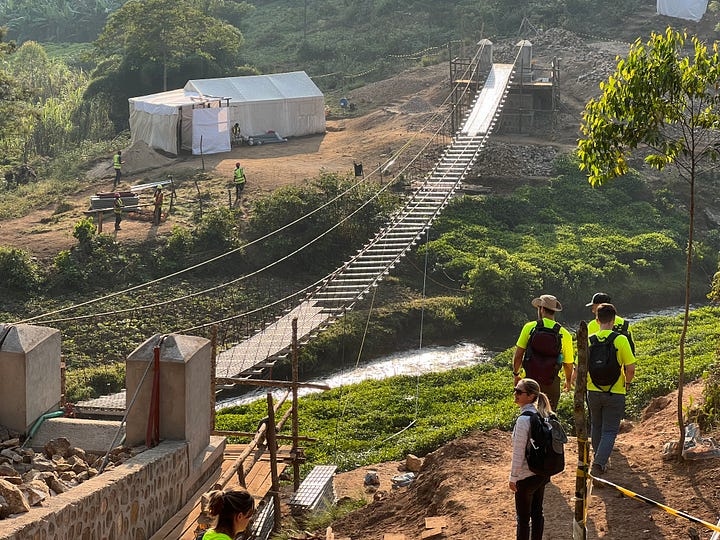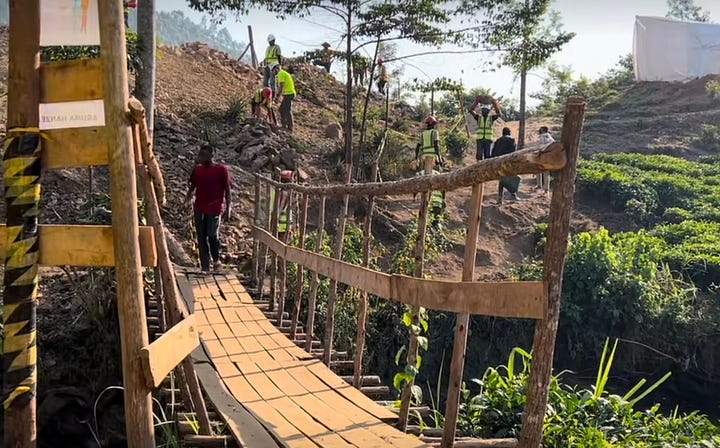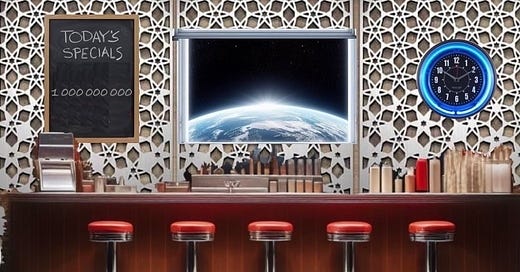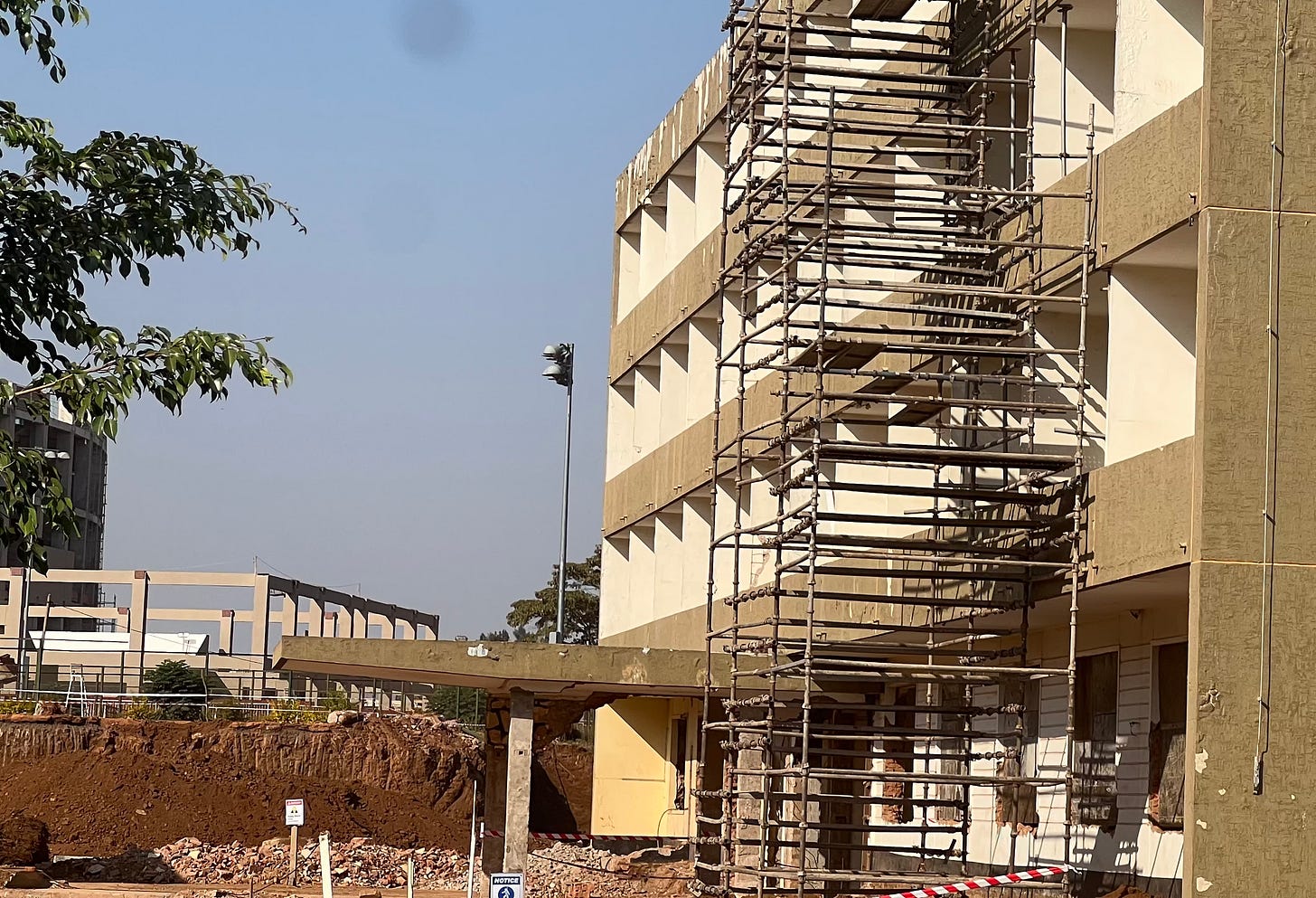Decades ago, my older sister took six months off from college to travel Europe with a performing stage troupe. They hit major cities throughout their journey, never staying in one place for more than a few days before moving on. Imagine her surprise when, during a day off in Paris, she ran into an acquaintance she hadn’t seen in three or four years. They shared a coffee, caught up, and then went their separate ways.
A week later, they ran into each other again—this time in Piccadilly Circus, one of the busiest sections of central London. What are the odds? Feel free to leave your calculations in the comments.
As of this writing, I cannot recall ever encountering an old friend or even an acquaintance during my travels. A happenstance meeting with a neighbor at my local grocery store is rare enough. Clearly, I need to get out more when I return to Basecamp. Still, I’ve had a few other chance encounters, and I’d rank my most unlikely meeting in the one-in-a-billion category.
A couple of years ago, my wife and I visited Rwanda. I had spent a great deal of time researching the country’s recent history for a novel (as yet unpublished, more’s the pity), so when my wife was given the opportunity to volunteer on a bridge-building project with the charity Bridges to Prosperity, we jumped at the chance to travel there together.
We spent our first day touring Kigali. At the top of the agenda was finding the building that served as the United Nations Headquarters in Kigali in 1994. The building features prominently in my book, and until then, I had only seen exterior photos. I was eager to step inside.
One U-turn later, we found the building undergoing major renovations, stripped down to its concrete bones. With a little persistence and smooth talking by Aisha, our guide, driver, and general adult supervision, the site supervisor eventually invited us into the construction site. We signed the necessary waivers, donned reflective safety vests, and were given a full tour of the building—no photos, please.
Despite its semi-demolished state, I was thrilled to walk the halls and step into the office of my protagonist on the second floor. The room was a little smaller than I’d imagined, and as much as I wanted to sneak a photo, my better judgment compelled me not to push my luck and offend our host. My lovely bride managed to secrete a small triangular fragment of the demolished lobby’s floor tile into her bag—a souvenir that now holds a prominent spot on my desk next to the spot where I plan to put my Pulitzer someday.
We spent the rest of the day visiting Kigali’s genocide memorial, marveling at how far the country had come since those dark days, amazed at how the country has rebuilt itself and worked to move beyond the hate of identity politics—though I suspect some underlying tensions remain. We ate a late lunch at the famous Hôtel des Mille Collines (Hotel Rwanda, 2004), and just as we were preparing to return to our flat, I realized we had missed the Camp Kigali Belgian Memorial honoring the ten Belgian soldiers tortured and murdered in the genocide’s opening days.
We arrived at Camp Kigali to find a tour bus unloading fifteen or so tourists. I groaned inwardly at the prospect of sharing the solemn site with a chattering crowd. Their guide gathered them at the entrance, and as my wife and I hurried past, I heard him speak—it was the voice I had heard for the first time years before in thePBS Frontline documentary, Ghosts of Rwanda (2004).
"I know that voice," I said to my wife. "I know him."
The voice belonged to Carl Wilkens, a missionary and the former head of the Adventist Development and Relief Agency International in Rwanda. He and his family had been living in Kigali the night President Juvénal Habyarimana’s plane was shot down, triggering the genocide.
Carl ensured his family’s escape but then made a decision few could fathom—he stayed. He was the only American to remain in Rwanda during those hundred days of slaughter, sheltering his staff and their families in his home. He is also credited with saving a school full of orphans from the Interahamwe’s machetes.
Had he not spoken, I would have walked right past him, mistaking him for just another tour guide. But I spent hours listening to him recount his story in that documentary. It turns out the tourists were American teachers traveling with Carl to learn firsthand about the events he witnessed.

I walked the memorial, eavesdropping on his presentation about the consequences of those horrific days, and when he finished, I introduced myself. To my gratitude, Carl generously took twenty minutes to talk with us about his experiences and perspectives. I came away believing that Carl, fortified by faith, seems innately wired to do the right thing. After our conversation, I couldn’t help but ask myself—would I have had the courage to stay when everyone who could fled?
Though my own time in Rwanda would be far less consequential, I spent my week in Kigali grappling with the stories of survivors—eager to engage, to listen, and to understand.
I invite readers to learn more from Carl’s own words from his book, I’m Not Leaving.


To my disappointment, I wasn’t eligible to participate in the bridge-build, so I remained in Kigali while my wife joined the crew. I spent the week talking with survivors, and thanks once again to Aisha (my ever-reliable adult supervision), I was able to spend three hours with the manager of the Ntarama Genocide Memorial, discussing the lasting ramifications of 1994.
The bridge completed, we wrapped up our trip with gorilla trekking and game drives—unforgettable experiences in their own right. But what lingers most isn’t the wildlife or the landscapes; it’s that single, improbable moment in Kigali. A voice I’d only heard through a screen, stopping me in my tracks, pulling history into the present. Of all the encounters I might have imagined on this journey, that was the one I never could have planned—one in a billion.
Disclaimer - I receive no consideration, compensation, or renumeration for any business or media mentioned.






